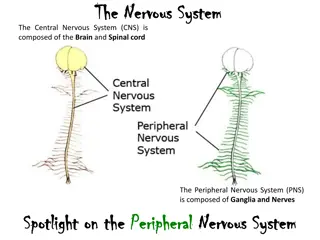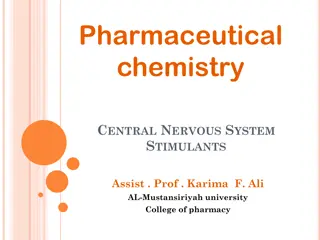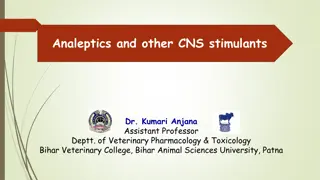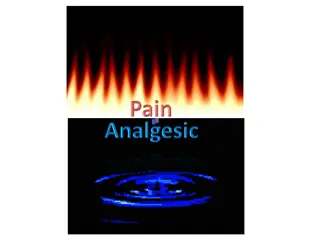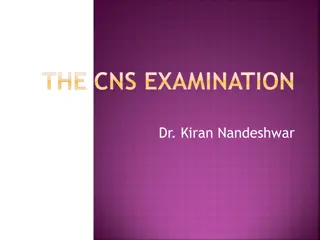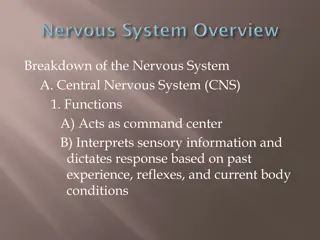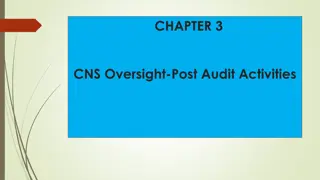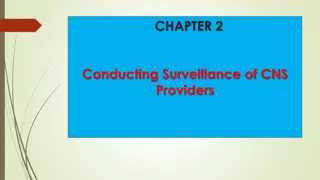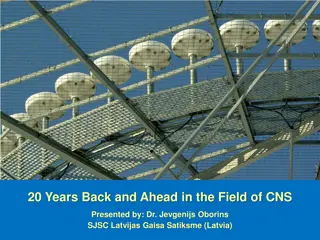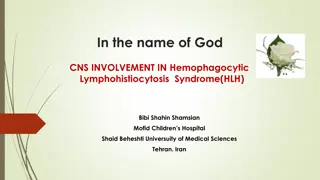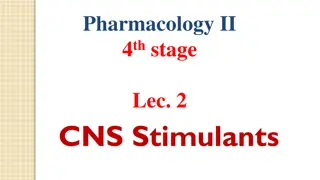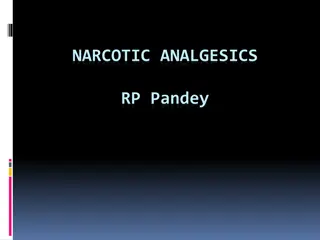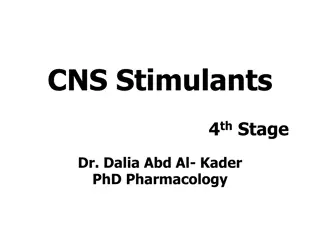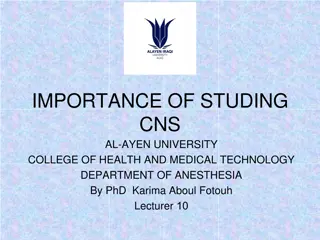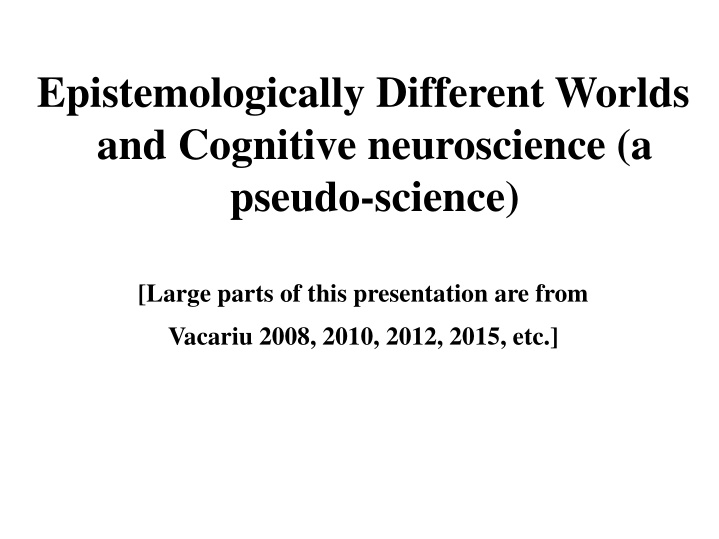
Epistemologically Different Worlds in Cognitive Neuroscience
Delve into the paradigm shift in cognitive neuroscience towards Epistemologically Different Worlds and the debunking of the mind-brain problem as a pseudo-problem. Explore the binding problem, localization issues, emergence vs reductionism, and other key challenges in CNS research.
Download Presentation

Please find below an Image/Link to download the presentation.
The content on the website is provided AS IS for your information and personal use only. It may not be sold, licensed, or shared on other websites without obtaining consent from the author. If you encounter any issues during the download, it is possible that the publisher has removed the file from their server.
You are allowed to download the files provided on this website for personal or commercial use, subject to the condition that they are used lawfully. All files are the property of their respective owners.
The content on the website is provided AS IS for your information and personal use only. It may not be sold, licensed, or shared on other websites without obtaining consent from the author.
E N D
Presentation Transcript
Epistemologically Different Worlds and Cognitive neuroscience (a pseudo-science) [Large parts of this presentation are from Vacariu 2008, 2010, 2012, 2015, etc.]
Abstract In few words, I present the main actual problems of cognitive neuroscience: mainly the binding problem (other problem - localization, differentiation integration in the brain, the troubles created by the brain imaging with the same argument). After decades of many people working in CNS, there are no palpable results. Why? This framework of thinking, world , universe , is wrong! Therefore any alternative to the mind- brain problem (identity theory, emergence, dualism, etc.) is wrong. In 2002-2005 (and later), I introduced the new framework: the epistemologically different worlds which shows that the mind-brain problem is a pseudo-problem! In 2015, our book: Is CNS a pseudo-science? Answer: yes it is!!!
SCIENCE Scientific knowledge 4 problems of the "world" (dualities): 1. mind-body (brain) [Cognitive Science] 2. cell/organism-life [Biology] 3. particle-wave (quantum) [Physics] 4. micro-macro (Einstein-quantum mech.) [Physics] All other great problems in foundations of special sciences for the "world"! The cause? The wrong framework: world/unicorn world! Great philosophers deal with this framework!
Cognitive neuroscience CNSmain problems: CNS subdomain of CS CS: problem of representation and computation (computationalism, connectionism and dynamical systems) Identity theory - reductionism for majority of researchers, Searle s emergence , different aspects (Spinoza), etc. Topics: emergence, spatial cognition, supervenience, reductionism, etc. Using fMRI, EEG, MEG, TMG, etc.
(1) Binding problem (2) Localization (3) Emergence vs reductionism (4) Mental representation and computation (5) Spatial cognition, etc., etc. Optimism vs skepticism (Uttal, the realist) in CNS Uttal: brain activity associated with mental activity is broadly distributed on and in the brain. The idea of phrenological localization must be rejected and replaced with a theory of broadly distributed neural systems accounting for our mental activity (Uttal 2011, 45). Where happens the binding processes in the brain? Vacariu: Nowhere in the brain, but in the mind! Dualism? Emergence (Searle)? NO! EDWs! (See below)
The binding problem Different forms of binding: spatial (location) or temporal, conscious or unconscious, visual (linking together color, form, motion, size, and location of a perceptual object or binding various perceptual objects), auditory, cognitive (explains how a concept is connected to a percept), binding in language understanding, in reasoning, cross- modal binding, sensory-motor binding, memory binding and the causes of a unified conscious experience (Uttal, Velik 2010, Plate 2007, etc.).
Binding mechanism is almost everywhere in the brain and in all processing levels (Velik 2010, Uttal 2001 ) Visual binding: any object, for instance, has certain visual features (color, orientation, motion, texture, and stereoscopic depth) that are linked to particular neuronal areas. In the past, perception of color was correlated with V4, motion with MT/V5, and so on. Due to recent discoveries, such correlations are much more problematic. Since we perceive only a singular entity (the object) with various features, then a mechanism that binds these features together in a single entity becomes necessary: what mental processes (conscious or unconscious) create the binding among various features? Synchronization or temporal coding theory (or temporal binding) (von der Malsburg, Engel, Singer, Fries, etc.) (outdated: Treisman s feature-integration theory)
Epistemologically different worlds (EDWs) (2002, 2005, 2008, etc.) World /unicorn world = human illusion The oldest Ptolemaic epicycle, most powerful (unquestionable during oldest times!) Scientists work/think in this framework Unicorn-world 4 dualities = pseudo-problems in science Replace the "world" with EDWs!
Principles of EDWs (A) About non-living entities (1) Epistemologically different interactions constitute epistemologically different entities, and epistemologically different entities determine epistemologically different interactions. (2) Any entity exists only at "the surface" because of interactions that constitute it. (3) Any entity exists in a single EW and interacts only with the nonliving entities from the same EW. (4) Any EW appears from and disappears in the hyper-nothing. (5) Any EW is, therefore all EDWs have the same objective reality.
Exist is for entity with determinations/features. In general, spatio-temporal framework Existence and interaction interrelated Interactions constitute surface of an it. Ontological reality (not exist "inside" of an object) Determinations (features) Constitution Parts whole Organizational + epistemological- ontological thresholds
(B) Propositions for being (the "I"/life/mind) and corresponding to cell/organism: (6) Life/mind corresponds to a cell/organism. (7) Life/mind is an EW. Therefore, life/mind is. (8) Having certain determinations, from our viewpoint a cell/organism is "composed" of an amalgam of other molecules/cells + relationships. (9) Certain states and processes form knowledge that is life (mind). (10) As an entity having a unity, life/mind is an indeterminate individuality.
Without correspondence to life/mind, any cell/organism - not survive in its environment Coordination of biological functions needs an unity impossible to be used/exist within mechanisms of a cell/organism Such unity = the I /life/mind! This unity corresponds to development of a cell/ organism and evolution of species. Cognitive neuroscience: an error = checking for unity of consciousness within the brain! CNS = a pseudo-science (see Vacariu 2015, etc.): it has no ontological entities + main notions are vagues, unclear = pseudo-notions!
CNS: no progress since its birth (just because it is a pseudo-science!) The unity of the I represents indeterminate individuality of life/mind. The notion of life/mind has no plural. (Any life/mind is an EW.) Any mental state/process (determinate feature) is the I . No space/color in mind/brain. However, feature of color (that belong to a representation of an object situated in the macro- EW, for instance) is mind.
From human viewpoint: not too many EDWs Extending conditions of observation/ interaction to all entities, number of EDWs increases considerably Rejection of levels , emergence , supervenience , composition , or entanglement , non-locality , complexity , causalities (11) Being (life/the "I") is, therefore EDWs are. Objective reality for all EDWs: no criteria for differentiating their objective reality Mind and body (brain), waves and particles, micro- macro, etc. are or belong to EDWs
Hume laughing: "Post-modern human being quite many pseudo-causalities dominate your world ! After Copernicus, Darwin, Freud, [ alone in the world ], Einstein s [ creating particular frameworks ] revolutions against myths in human thinking, reject yet another myth: world . Once again to mount a Copernican revolution for discarding our special status: World does not exist!
EDWs perspective changes the largest Weltanschauung (ironically, a wrong notion!) throwing to the garbage the most tangible but the most dangerous notion: the world/universe/reality. [God even cannot exist, just because one EW is not for any EDW; otherwise, there would be an ontological contradiction in God s existence]

